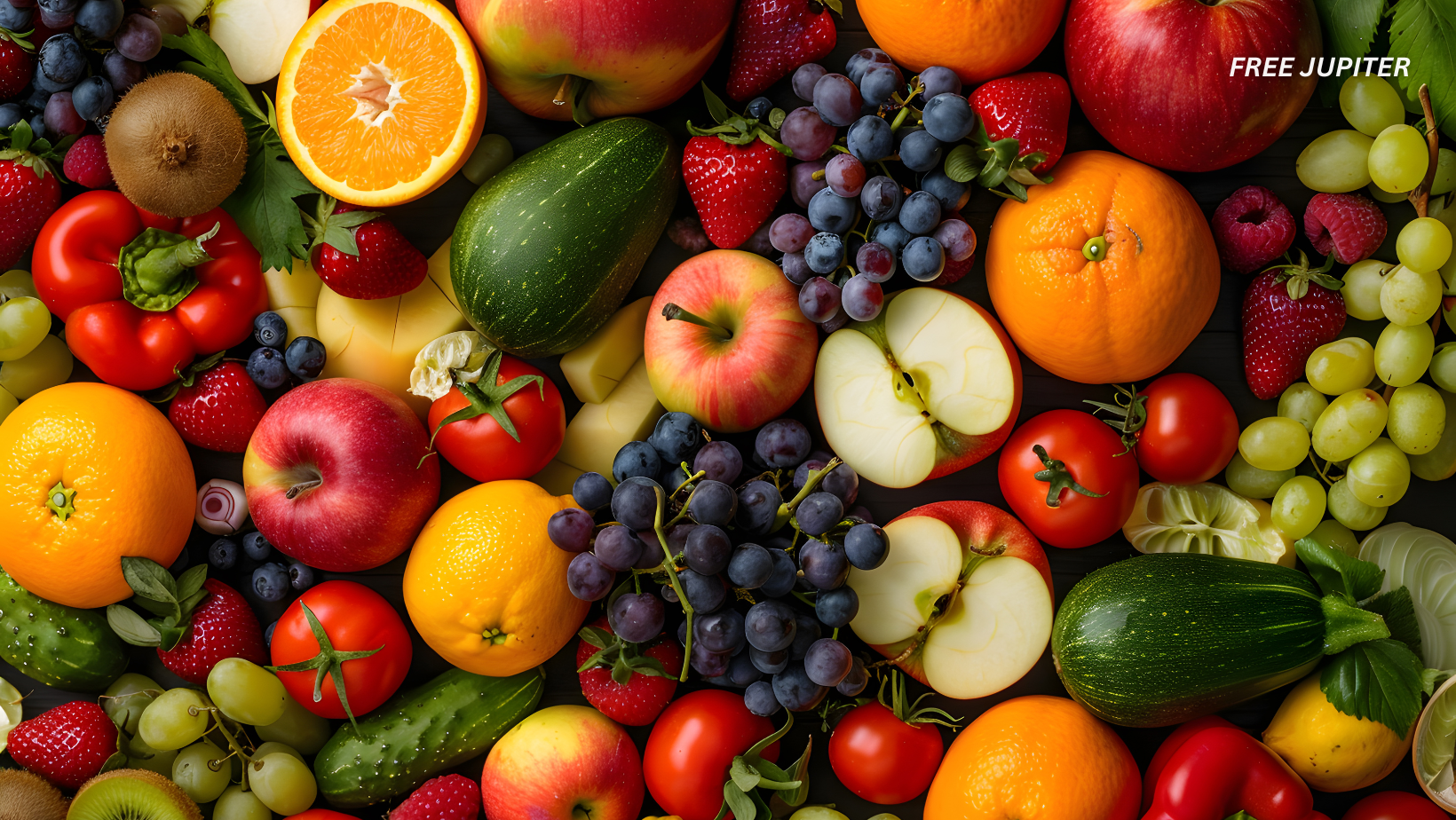Friendly Note: FreeJupiter.com shares general info for curious minds 🌟 Please fact-check all claims—and always check health matters with a professional 💙
When you think of protein, you probably picture a juicy steak, grilled chicken, or maybe a scoop of Greek yogurt. But nestled quietly in your fruit bowl are a few unsung heroes that sneak protein into your diet, often overlooked in favor of their meatier counterparts.
While fruits aren’t going to win any awards for being the highest sources of protein, certain varieties still offer a meaningful amount—especially when combined with other nutrient-rich foods. Plus, they come with an impressive lineup of other health perks: fiber, antioxidants, vitamins, minerals, and a natural sweetness that makes healthy eating feel like a treat.
So, if you’re looking to up your nutrition game in a juicy and colorful way, here are seven fruits worth paying attention to.
1. Avocado: The Creamy Protein Powerhouse in Disguise
Let’s start with the fruit most likely to be mistaken for a vegetable. Botanically speaking, avocado is a fruit—and not just any fruit. A medium avocado brings you about 4 grams of protein, making it one of the most protein-dense fruits out there.
But wait, there’s more. Avocados are bursting with monounsaturated fats, the good kind that support heart health. They also deliver 9 grams of fiber, which supports digestion and helps keep you full. You’ll also get hefty doses of folate, vitamin C, vitamin K, and vitamin E, along with potassium and magnesium—essential for muscle and nerve function.
Bonus nutrient: Avocados are rich in lutein and zeaxanthin, antioxidants that protect your eyes from harmful blue light and age-related issues.
Tasty Ways to Eat It:
- Spread it on whole-grain toast and top with tomato slices or a poached egg.
- Blend into smoothies for a creamy, ice cream-like texture.
- Add slices to grain bowls, wraps, or burgers.
- Mash into guacamole, then use it as a dip or taco topper.
- Even try chocolate avocado mousse for a surprising dessert twist!
Read more: The Kinds Of Proteins You Should Eat Every Week, According to a Dietitian
2. Blackberries & Raspberries: Small Berries, Big Nutritional Impact
These juicy gems are more than just eye candy on your plate. Blackberries offer 2 grams of protein per cup, while raspberries provide around 1.5 grams. They’re also impressively high in fiber—about 8 grams per cup, which supports a healthy gut and helps regulate blood sugar.
Antioxidants? They’ve got those, too. Both berries are loaded with anthocyanins, which help fight inflammation and may support cognitive function and heart health.
Mineral-rich? Check. You’ll also find vitamin C, vitamin K, manganese, and potassium in each handful.
Tasty Ways to Eat Them:
- Toss on top of oatmeal or overnight oats.
- Stir into plain yogurt with chia seeds and a drizzle of honey.
- Muddle into lemon water, iced tea, or spritzers.
- Mix into muffins or healthy baked goods.
- Freeze and snack on them like sweet ice nuggets.
3. Grapefruit: Tangy, Refreshing, and Full of Zing
Zesty and a little sassy, grapefruit offers about 2 grams of protein per fruit—plus 4 grams of fiber. This citrus superstar is overflowing with vitamin C, delivering more than your daily requirement, and a good source of potassium, which helps manage blood pressure.
Thanks to its slightly bitter flavor, grapefruit pairs beautifully with savory ingredients, making it perfect for creative salads and sides.
Fun Fact: Some studies suggest grapefruit may support weight management by helping regulate appetite and metabolism. But always check with your doctor if you’re on medications—grapefruit can interfere with certain drugs.
Tasty Ways to Eat It:
- Cut in half, sprinkle with cinnamon or honey, and broil lightly for a caramelized finish.
- Add wedges to seafood salads or grilled shrimp skewers.
- Use the juice in homemade vinaigrettes or marinades.
- Combine with avocado and arugula for a tangy salad twist.
4. Jackfruit: The Tropical Fruit That Doubles as “Meat”
If you’ve ever tasted jackfruit, you might’ve been surprised by its stringy, tender texture—similar to pulled pork. That’s why this fruit has become a plant-based favorite. A 1-cup serving contains about 2.6 grams of protein, along with fiber, vitamin C, potassium, and several B vitamins, especially B6, which is key for metabolism and brain health.
Jackfruit’s mild, slightly sweet flavor makes it incredibly versatile—it soaks up whatever seasonings you give it.
Tasty Ways to Eat It:
- Shred it and simmer in barbecue sauce for vegan “pulled pork” sliders.
- Season with chili powder and cumin for tacos or burrito bowls.
- Add chunks to coconut-based curries or stir-fries.
- Use young, green jackfruit as a savory meat substitute; use ripe jackfruit in desserts or smoothies.
Read more: Boosting Protein Intake May Help Slow Alzheimer’s Decline, Study Finds
5. Kiwi: A Zesty Green Boost with Surprising Protein
You may know kiwi as the tart green fruit hiding behind fuzzy brown skin, but it also sneaks in about 2 grams of protein per two fruits. You’ll also score 4 grams of fiber, more vitamin C than an orange, and decent doses of vitamin K and potassium.
This vibrant fruit supports immune health, helps regulate blood pressure, and contributes to bone strength.
Did You Know? You can actually eat the skin of a kiwi. It’s a bit fuzzy, but totally edible and packed with even more fiber.
Tasty Ways to Eat It:
- Slice and mix into tropical fruit salads.
- Freeze into popsicles with mango or pineapple chunks.
- Add to smoothies with banana, spinach, and almond milk.
- Use in salsa with red onion and chili for a spicy-sweet topping for fish.
6. Passion Fruit: Tiny Seeds, Mighty Nutrition
With its wrinkly exterior and seedy pulp, passion fruit may not look like much—but it packs a punch with over 5 grams of protein per cup. It’s also rich in vitamins A and C, iron, magnesium, and potassium.
Its strong, tangy flavor makes it a bold addition to both sweet and savory dishes. Plus, it’s full of plant compounds and antioxidants, especially beneficial for immune function and skin health.
Tasty Ways to Eat It:
- Slice open and eat the pulp straight from the shell with a spoon.
- Add frozen passion fruit to mango or banana smoothies.
- Drizzle pulp over Greek yogurt or pancakes.
- Mix into ceviche or spicy marinades for meat or tofu.
7. Bonus Picks: Fruits That Deserve a Shoutout
While they didn’t make the main list, a few other fruits deserve honorable mention:
- Guava: With about 4 grams of protein per cup, plus tons of vitamin C and fiber.
- Bananas: Roughly 1.3 grams of protein, potassium-rich and super satisfying.
- Dried apricots: When dried, the protein gets more concentrated—great for snacking or adding to oatmeal.
Read more: The Kind of Protein You Need To Help You Live Longer: Study
Final Thoughts: More Than Just Sweet Snacks
Even though fruit isn’t typically thought of as a protein source, it can still contribute to your overall intake—especially if you’re layering it with other nutritious foods. Whether it’s avocado toast, a smoothie bowl topped with berries, or jackfruit tacos for dinner, these protein-rich fruits bring much more than just sweetness to the table.
So go ahead—play with your food. Blend it, bake it, mash it, or scoop it right from the shell. With nature’s candy pulling double duty as a source of protein, healthy eating just got a little more delicious.
Disclaimer: The information in this article is for general informational purposes only and is not medical advice. We are not doctors, and this website is run as a family hobby project. Always consult a qualified healthcare professional before making decisions about your health. Please fact-check any claims and use this content as a starting point, not a substitute for professional guidance.










